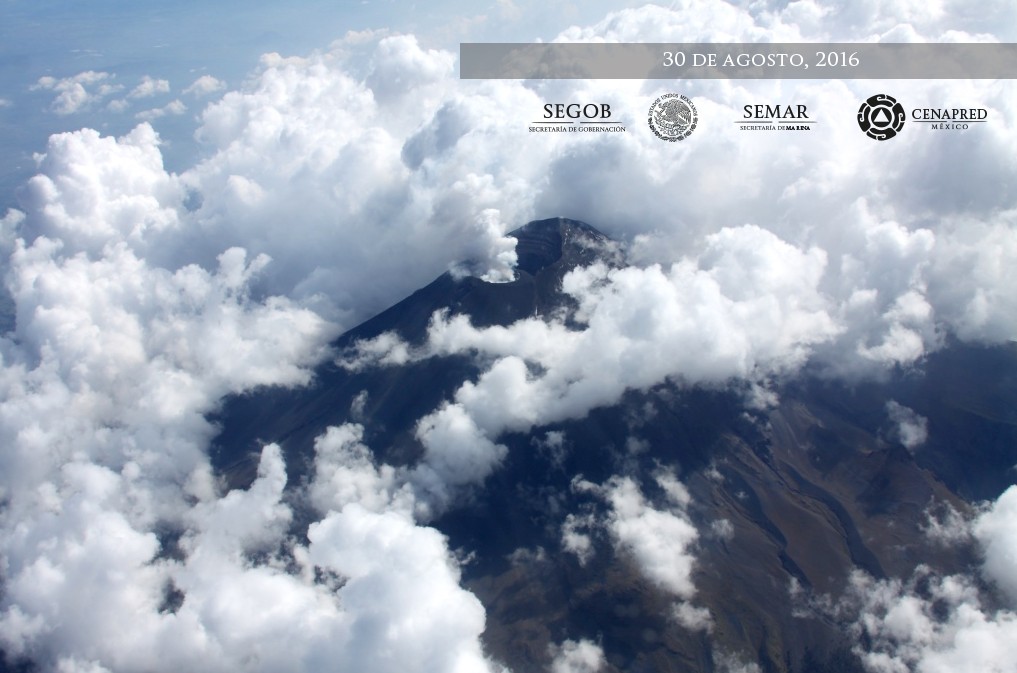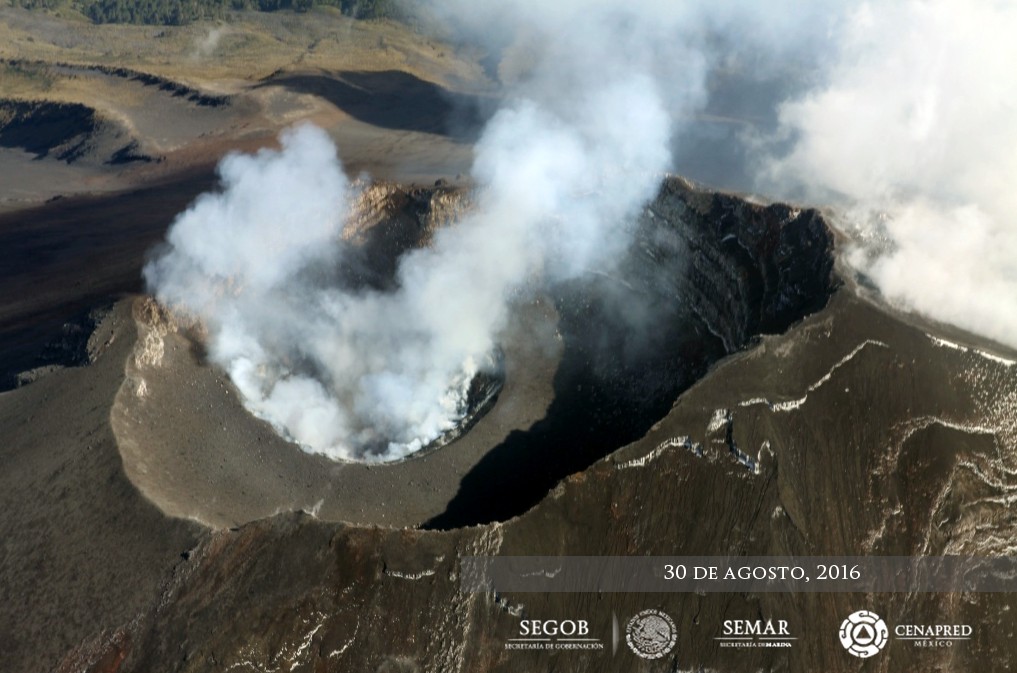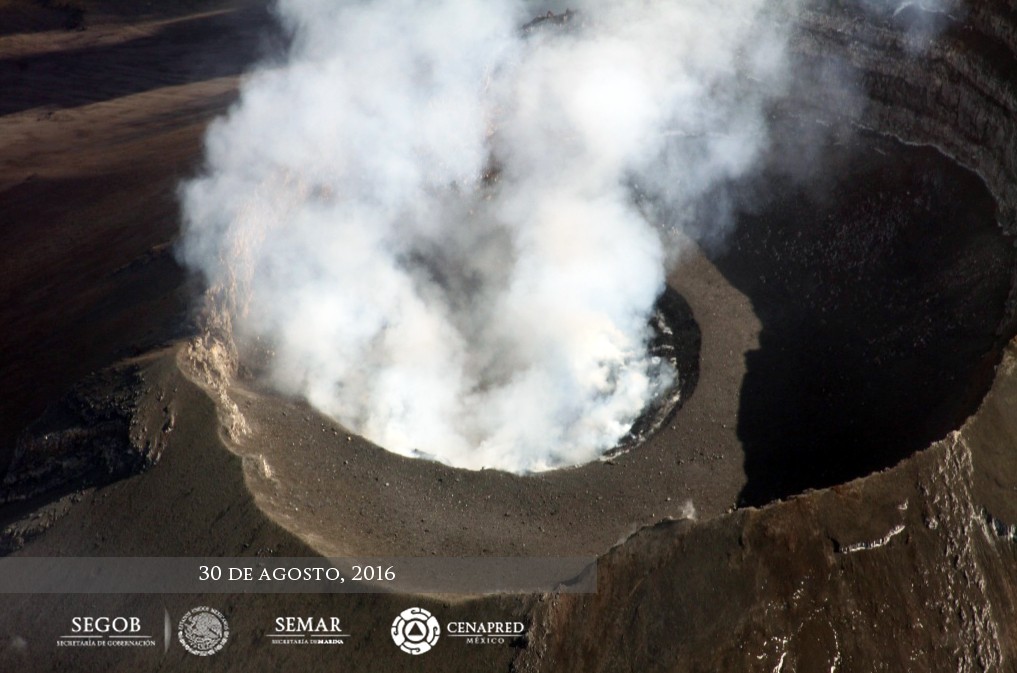Popocatépetl spews volcanic ash to 7.3 km (24 000 feet) a.s.l., Mexico

Volcanic ash produced by the eruption of Mexico's Popocatépetl volcano has reached an altitude of 7.3 km (24 000 feet) a.s.l. around 03:30 UTC on September 14, 2016, the Washington VAAC reported.
Volcanic ash is not observable in satellite imagery due to clouds. Model winds suggest any volcanic ash to move southwest of the summit, the center added.
CENAPRED reported at 16:00 UTC on September 13 that they have observed 170 low-intensity exhalations over in the last 24 hours. However, no explosions have been observed due to intense cloudiness over the crater.
In the same period, the agency recorded intermittent episodes of low-amplitude harmonic tremor. Incandescence was observed in the crater in some episodes.

Incandescence observed at 08:01 UTC on September 13, 2016. Credit: CENAPRED
Two volcano tectonic earthquakes – M1.8 and M1.7 – were recorded at 07:21 and 08:08 UTC, respectively.
At the time of the report (16:00 UTC on September 13), continuous emission of steam and gas was observed. Seismic activity remained at low level.
In an overflight carried out on August 30, CENAPRED confirmed that the explosions that took place on August 27 and 28, 2016, destroyed the dome 60, build on August 1. Internal crater had an estimated diameter of 300 m (984 feet) and a depth of 30 m (98 feet).

Image credit: CENAPRED

Image credit: CENAPRED

Image credit: CENAPRED
The agency emphasized people should not go near the volcano, especially near the crater.
Geological summary
Volcán Popocatépetl, whose name is the Aztec word for smoking mountain, towers to 5426 m 70 km SE of Mexico City to form North America's 2nd-highest volcano. The glacier-clad stratovolcano contains a steep-walled, 400 x 600 m wide crater. The generally symmetrical volcano is modified by the sharp-peaked Ventorrillo on the NW, a remnant of an earlier volcano. At least three previous major cones were destroyed by gravitational failure during the Pleistocene, producing massive debris-avalanche deposits covering broad areas to the south. The modern volcano was constructed south of the late-Pleistocene to Holocene El Fraile cone.
Three major plinian eruptions, the most recent of which took place about 800 CE, have occurred from Popocatépetl since the mid Holocene, accompanied by pyroclastic flows and voluminous lahars that swept basins below the volcano. Frequent historical eruptions, first recorded in Aztec codices, have occurred since precolumbian time. (GVP)
Featured image: Popocatepetl on September 13, 2016. Credit: CENAPRED

Commenting rules and guidelines
We value the thoughts and opinions of our readers and welcome healthy discussions on our website. In order to maintain a respectful and positive community, we ask that all commenters follow these rules.